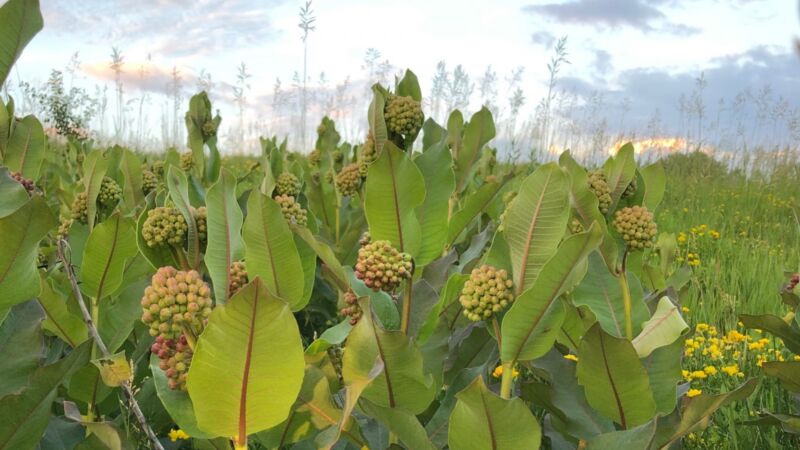
Why Monarchs? While monarchs are intrinsically important, conserving monarchs matters for more than just their own protection. We’re exploring the ways that monarch habitat and conservation helps people, other wildlife and the environment in this ‘More Than Monarchs’ series! Join us to learn more.
Research shows that the Earth’s climate is changing (IPCC). Carbon dioxide released by the burning of fossil fuels is increasing in the atmosphere. The buildup of carbon acts like a blanket, trapping heat on Earth, and results in higher average temperatures over time.
This warming climate is leading to changes in the environment that pose serious problems for people. Problems range from increased intensity of severe storms that cost lives and billions of dollars, to making cities hotter, raising rates of heat stroke and costs of cooling homes and businesses. Learn more about the impacts of climate change here.
Climate change also affects other creatures, even monarchs. A number of things make monarchs vulnerable to a changing climate (Monarch Butterflies and Climate Change, WWF; Threats: Climate Change, MJV; Monarchs in a Changing World).
 Monarchs depend on environmental cues such as temperature to know when to reproduce, migrate, and overwinter. Changing temperatures could alter the timing of these activities, and increase the likelihood of a phenological mismatch (when their host/nectar resources don’t match up with when/where monarchs are).
Monarchs depend on environmental cues such as temperature to know when to reproduce, migrate, and overwinter. Changing temperatures could alter the timing of these activities, and increase the likelihood of a phenological mismatch (when their host/nectar resources don’t match up with when/where monarchs are). - Their dependence on milkweed alone as a host plant is a further vulnerability, since they will have to go where milkweed is available. As temperatures rise, the range where milkweed grows could shift further and further north, forcing longer and riskier migrations.
- Monarchs also depend on specific overwintering habitat. Warming temperatures stress the trees in the overwintering forests and move the location of acceptable climate for both the trees and the monarchs.
- They also face increasingly frequent extreme weather events such as drought and severe storms, and extremes in hot and cold temperatures. Extreme weather and temperatures can kill monarchs at the overwintering sites and can result in poor growing conditions for flowers and milkweed.
Creating habitat for monarchs is not only good for monarchs; it is good for us by keeping more carbon out of the atmosphere and mitigating global climate change.
How? Plants sequester carbon. Carbon sequestration is the ability to contain, store or hold carbon through time. Living plants convert and store atmospheric carbon in their roots, stems, leaves, and wood. When a root, stem or leaf dies, microorganisms that live in the soil convert the plant carbon into soil carbon (Iowa: The Power of Prairies). Native plants like milkweed, flowers and grasses, which provide habitat for monarchs and other wildlife, have very deep roots. Planting and taking care of these plants can lead to less carbon going into the atmosphere.
The University of Illinois at Urbana-Champaign’s Florida & Orchard Prairie Restoration was designed to educate, beautify and inspire, and be a symbol of their “campus-wide efforts toward sustainability and carbon neutral practices.” The prairie is visited by many pollinators, beneficial predators, birds and small mammals, and additionally serves an important role in carbon sequestration.
Creating habitat as a way to address climate change is just one example of how the work we do for monarchs can make a difference in many ways. What are the co-benefits of monarch conservation that matter most to you? Keep following our “More Than Monarchs” series to hear more stories of what monarchs can do for us, our communities and our world.

The Monarch Joint Venture is a national partnership of federal and state agencies, non-governmental organizations, businesses and academic programs working together to conserve the monarch butterfly migration. The content in this article does not necessarily reflect the positions of all Monarch Joint Venture partners. Photos by Wendy Caldwell and Lincoln Brower. Root systems of Paririe Plants graphic from United States Environmental Protection Agency. Article contributed by Cora Lund Preston, Monarch Joint Venture, for the Monarch Joint Venture Communications Working Group and NAPPC Monarch Taskforce.
